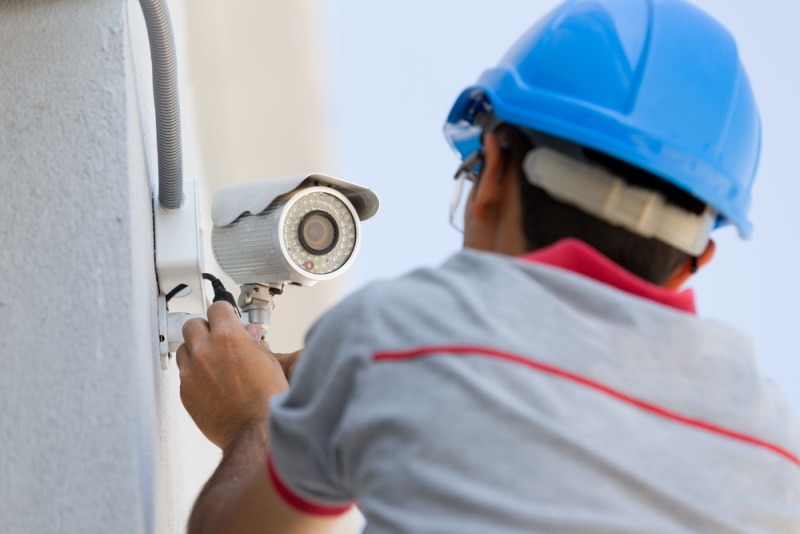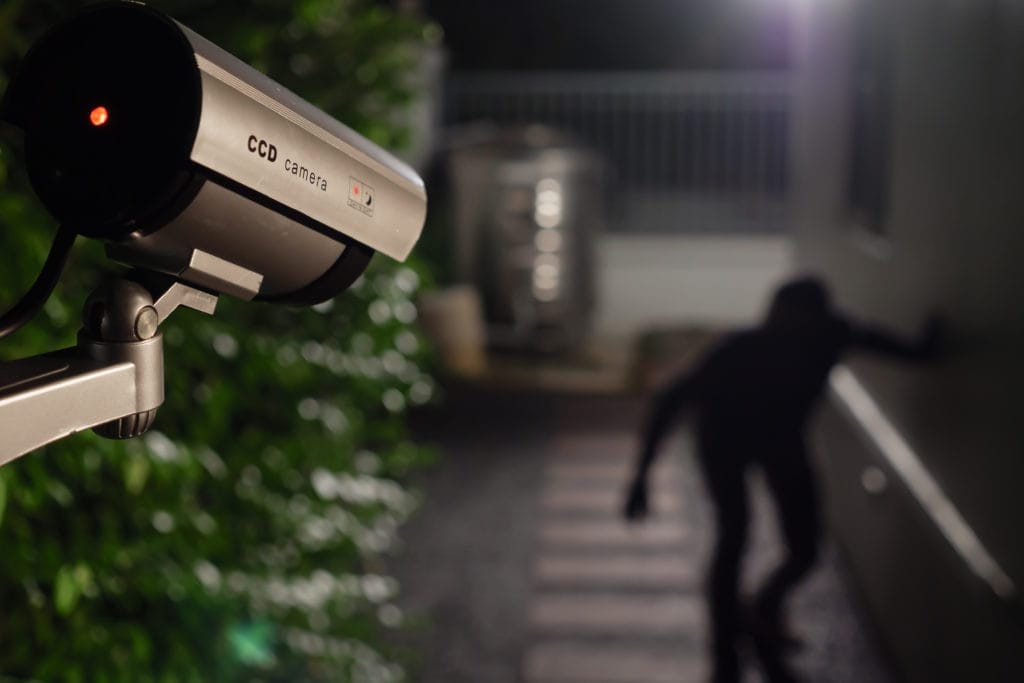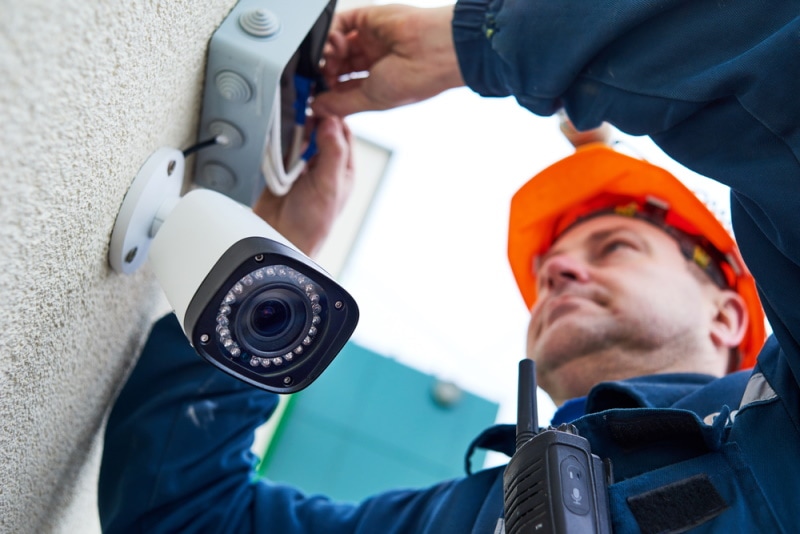9 Home Security Trends You Need to Know in 2025
-
Kristin Hitchcock
- Last updated:

Home security has made leaps and bounds over the past decade. Once, home security cameras were professional, bulky, and difficult to use. Only the very wealthy had security cameras since they were often too expensive for everyone else.
However, today, they have gotten much cheaper. Companies are releasing more user-friendly models designed for the average person. Most of these no longer require professional installation and often work with a smartphone app.
Several other trends are just now starting to take off, too. These can help you keep your home safer by upgrading or getting cameras if you haven’t already.
The 9 Home Security Trends to Keep Your Home Safe
1. AI
AI has been all the rage recently. It’s all over the technology sphere; there is hardly a topic that AI hasn’t infiltrated. Smart home cameras now feature AI that may help keep your home safer—instead of being a gimmick.
Some of these devices can detect faces, allowing them to only sound an alarm with an unknown or flagged face is seen inside the home. Others may be able to tell the difference between an animal and a person, preventing alerts due to wildlife or insects.
Of course, these are often more expensive, especially since this technology is just starting to take off.

2. Hardware Advances
While the software inside many security systems is getting smarter, the exterior is getting tougher. Many security systems have been able to withstand average weather. However, systems are being upgraded all the time to withstand even tougher situations. Each day, companies are coming out with ways to make their security cameras more durable and last longer, especially when outdoors.
However, these security devices are also much more attractive than they once were. In the past, they were bulky and noticeable. However, today, many devices can easily blend into someone’s property.

3. Cybersecurity Updates
Cybersecurity has become increasingly serious as technology has pervaded our lives. Today, criminals can access your home’s security cameras, allowing them to view your personal life. To prevent this from happening, companies are releasing new software for their security devices to combat hacking.
These updates are often released for free and available for all existing devices, too. Therefore, you don’t necessarily have to buy new cameras to make yourself more digitally secure. Furthermore, many companies are upgrading their internal systems to prevent customer information from ending where it shouldn’t.

4. Smarter Lighting
If you have “smart” lighting installed, you may use less electricity than other homeowners. There are now many lights on the market that connect to motion-sensing cameras. These lights turn off automatically when no one is left in the room. Therefore, you don’t have to worry about remembering to turn off the lights. Often, the lights also turn back on when someone re-enters the room.
Outdoor lighting is also beginning to use solar power. While lower-wattage solar lights have existed for a while, solar power technology has now become reliable enough to be used on more powerful lighting.

5. Cloud-Based Security
We expect cloud-based storage to become the norm for at-home security. Many wireless systems now use the cloud to store recordings, allowing easy access via a mobile app. However, several devices also require a subscription, adding to the price of the service.
Cloud-based storage allows the homeowner to look at the recordings when they are not home. Therefore, this allows them to check information about break-ins and their home’s security without actually being at home.

6. Integration
Security systems are always working towards integration. Many companies now offer various devices that all connect to the same app and talk to each other. Many also prevent other companies’ products from working with their own, encouraging customers only to purchase their products. However, there has been a trend towards integration, even across brands. Shortly, consumers should expect most of their security devices to work together.

7. Ease-of-use
Today, many of the security cameras and other devices on the market can be installed by the homeowner. They do not require wiring directly into the home’s electrical system or wired to a centralized recording system. Therefore, they can be installed relatively easily. Many security systems are even made specifically for being installed by the homeowner.
Furthermore, security systems have also gotten much cheaper, and more people can purchase them. Because more people are purchasing security products, more companies are making their installation process easier.

8. Better Sensors
Technology is slowly improving all the time. Many sensors inside cameras and other security devices are also improving. Sensors not only have wider ranges and cleaner pictures but they may also be equipped with AI to use that information more effectively. For instance, many now have voice and facial recognition, preventing false alarms.
Many have also become more tamper-free. With sensors to indicate pressure and movement, some cameras can tell if an unauthorized person is attempting to knock down or move them.

9. Energy Efficiency
Today, many security devices rely on batteries. The devices are becoming more and more energy efficient to prevent the batteries from needing to be changed all the time. Cameras no longer record all the time. Instead, they usually only turn on when accessing via their app or when movement is detected. Some cameras join together, turning on whenever one of the cameras in the system detects movement.
Furthermore, the devices are just becoming more energy efficient overall.

Conclusion
Security systems have really taken off over the last few years. Now, just about anyone can purchase and install a security system without the help of a professional. These systems come with easy-to-use installation guides and are often controlled via an app on your phone. They’re much more user-friendly than they were in the past.
Plus, companies are forever bettering their security technology. With AI and facial recognition, false alarms are decreased. Some devices can even tell the difference between a person and an animal or insect. We expect these trends to continue as cameras become more innovative and smarter.
Many security devices also work together now. Not only do cameras link up together, but they also work with other devices, like motion detectors and smart locks.
- https://lockly.com/blogs/news/9-home-security-trends-to-follow-in-2023
- https://datafloq.com/read/5-top-home-security-trends-of-2022/
Featured Image Credit: Andrey_Popov, Shutterstock
Contents
